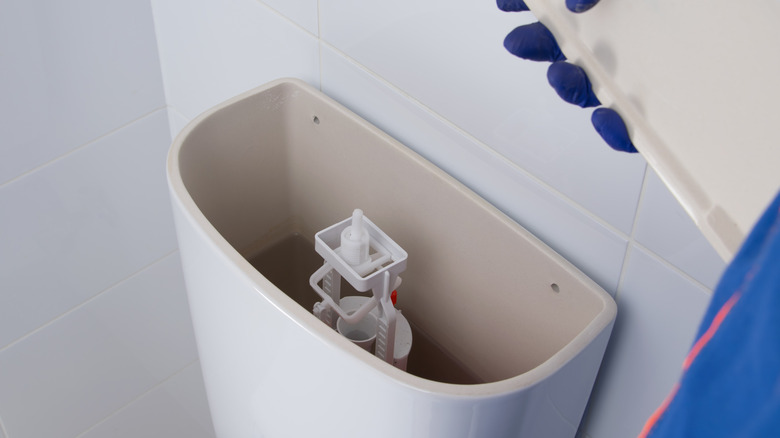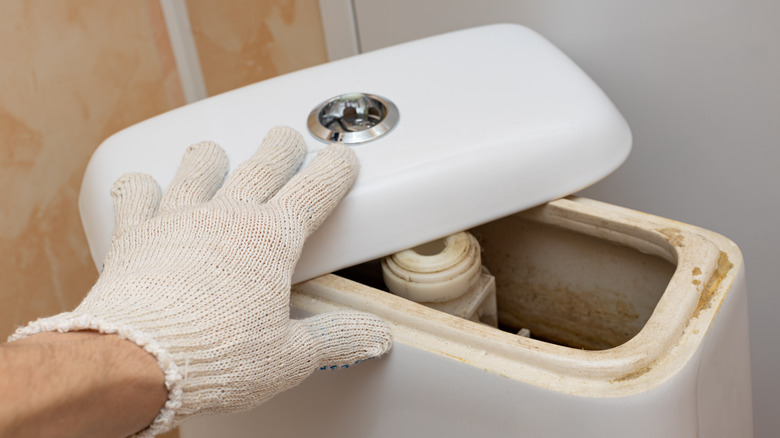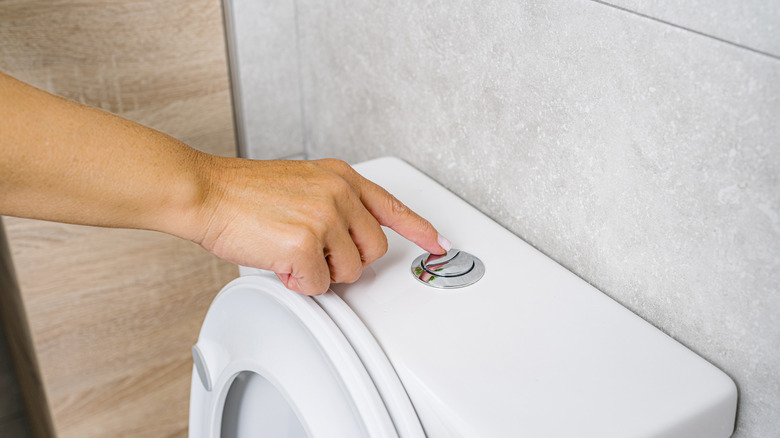This Outdated Plumbing Trick Is A Recipe For Disaster - But There Is An Alternative
According to the United States Environmental Protection Agency, toilet usage makes up almost 30% of all indoor water use in the average home. The gallons of water used to flush toilets every day not only have an impact on the environment but can also lead to high water bills. As a result, many have searched for ways to use less water when flushing the toilet. The decades-old brick method is one of the most popular.
So, what is the brick method, and how does it save water? The idea is that placing a brick inside of your toilet's tank will reduce its water usage by about ½ gallon. This method may seem like a great idea until you consider the fact that bricks are not meant to be submerged in water indefinitely. Bricks can disintegrate over time when placed in a toilet tank. This may result in damage, as a toilet is not designed to properly flush or filter out brick particles that could wreak havoc on your plumbing system.
Another problem with the brick method is that it's simply not necessary for many households these days. The Energy Policy Act (EPAct) passed by the U.S. Congress in 1992 required all future toilets (from 1994 on) to meet certain water conservation standards. If you do still have an older toilet in your home, there are better methods to reduce its water usage.
Placing a brick in your toilet tank is risky
Yes, you can save about ½ gallon of water per flush by placing a brick in your toilet tank. However, all of the risk factors that accompany this method may not be worth it. Placing a brick in your water tank alters the total amount of water it holds, but toilets are manufactured to require a specific amount of water to flush properly. If the height of the water in your toilet tank is even slightly off, your toilet may not be able to complete the flushing process properly. This could result in trapped waste, as you may not have enough water in your tank to push waste into the sewer line. It could also cause sewer gasses to make their way into your bathroom.
Although placing a brick in your toilet tank poses many risks, there are thankfully quite a few other ways to use less water when flushing that are far safer. A similar solution is to fill a plastic bottle with small rocks or sand, seal it with a bottle cap, and place it in your toilet tank. It is important to note that this method only solves the problem of the disintegrating brick damaging your toilet and plumbing system. You will still run the risk of improper water volume in your toilet tank. Most plumbing professionals recommend simply upgrading to either a low or dual-flush toilet.
Other ways to use less water when flushing
Another way to use less water when flushing is to skip the toilet handle and flush manually with a 2-gallon bucket of water. Simply dump the water into the bowl. The force of the water will trigger the toilet to flush. Remember that all of these water conservation methods are only beneficial for toilets installed before 1994. Newer toilets already use less water to flush. If you are insistent on the brick method, you may be happy to hear that an organization developed an almost identical solution that is much safer.
The Drop-A-Brick project created a brick made of rubber to use in toilet tanks. This innovative solution helps older toilets use less water but does not disintegrate over time like a regular brick. "We created the product because, as it turns out, placing bricks in the tank of your toilet can actually cause more problems than it solves," Drop-A-Brick project co-founder Greg Hadden told Levis Strauss & Co. "Bricks have been known to dissolve, clogging valves and damaging delicate toilet components. We wanted to save water, not destroy toilets."
Hadden also shared that just like a real brick, the Drop-A-Brick could help households make significant contributions to water conservation. "While very simple, it's actually an extremely effective way for a household to save thousands of gallons every year," he continued. The project began crowdfunding in 2014, but there have been few updates since then.



